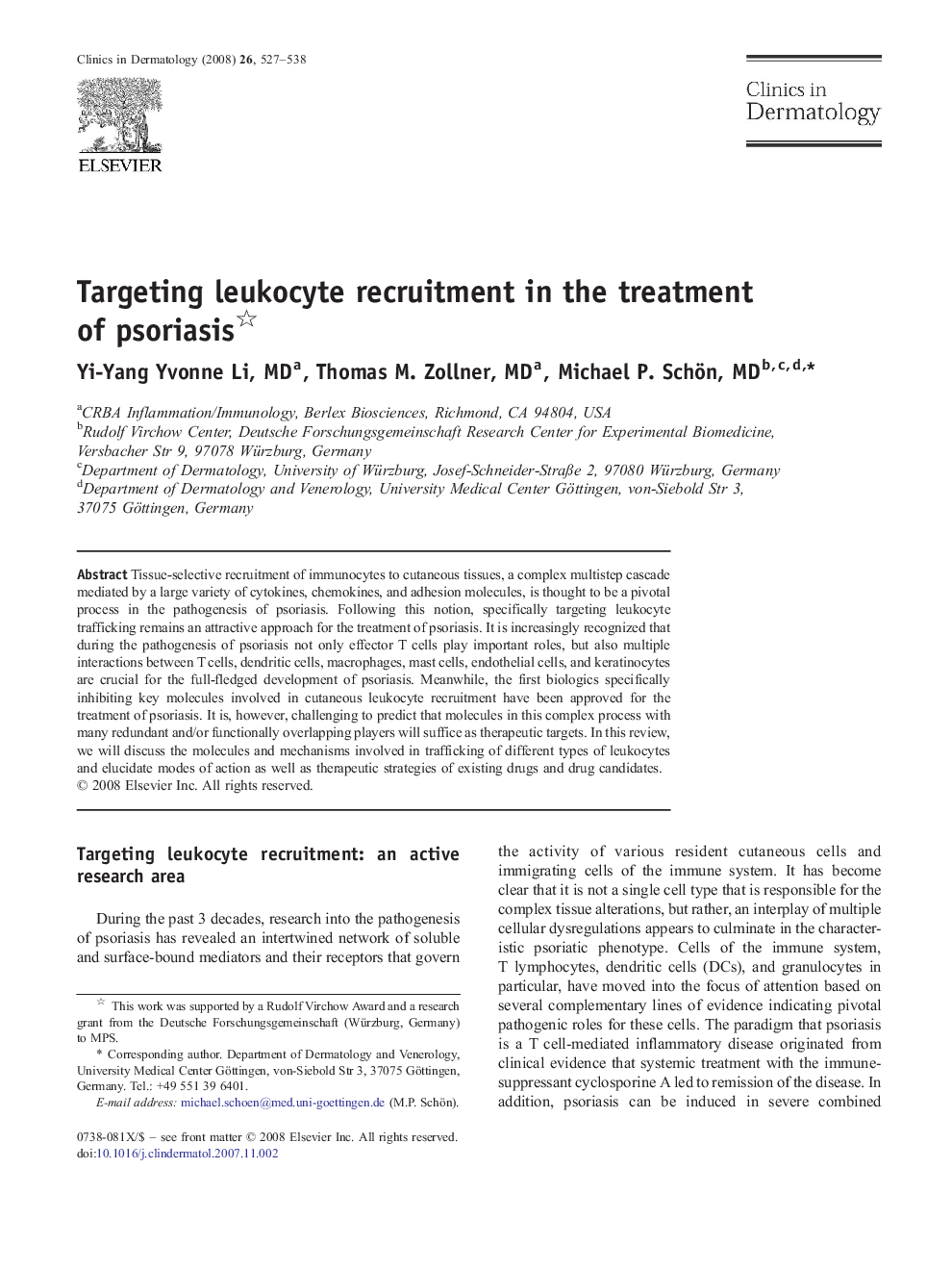| Article ID | Journal | Published Year | Pages | File Type |
|---|---|---|---|---|
| 3195001 | Clinics in Dermatology | 2008 | 12 Pages |
Tissue-selective recruitment of immunocytes to cutaneous tissues, a complex multistep cascade mediated by a large variety of cytokines, chemokines, and adhesion molecules, is thought to be a pivotal process in the pathogenesis of psoriasis. Following this notion, specifically targeting leukocyte trafficking remains an attractive approach for the treatment of psoriasis. It is increasingly recognized that during the pathogenesis of psoriasis not only effector T cells play important roles, but also multiple interactions between T cells, dendritic cells, macrophages, mast cells, endothelial cells, and keratinocytes are crucial for the full-fledged development of psoriasis. Meanwhile, the first biologics specifically inhibiting key molecules involved in cutaneous leukocyte recruitment have been approved for the treatment of psoriasis. It is, however, challenging to predict that molecules in this complex process with many redundant and/or functionally overlapping players will suffice as therapeutic targets. In this review, we will discuss the molecules and mechanisms involved in trafficking of different types of leukocytes and elucidate modes of action as well as therapeutic strategies of existing drugs and drug candidates.
